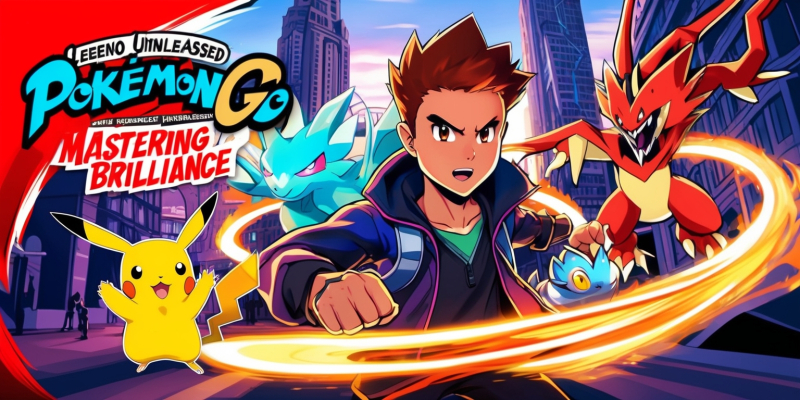
In the vibrant world of Pokémon Go, the arrival of legendary champions invites passionate debate among trainers. The buzz intensifies during special events as enthusiasts weigh the strengths of two extraordinary figures. Their presence during festive weekends has sparked discussions not only about sheer power but also about strategy, play style, and the unique mechanics they bring to the field. Each legendary boasts impressive stats that influence how trainers set up their teams, engage in raid battles, and plan for Max Battles, where every second and move counts. The nuanced differences between these titans offer a playground of tactical choices that compel both casual and competitive players to explore every facet of their abilities.
Battle Spirits of Legendary Siblings
The duality between these revered legacies creates an engaging narrative within the game. Their shared lore and complementary attributes inspire trainers to deliberate between offense and defense, blending aggressive maneuvers with a sturdy, protective form. One is celebrated for its unparalleled striking capacity, reminiscent of swift cavalry maneuvers on a digital battlefield, while the other garners respect for its enduring shield-like presence that offers stability against formidable opponents. This balance of strengths fosters versatile strategies in raid battles, where a team may lean on powerful attack techniques or require the resilience to withstand sustained challenges. Thus, the game provides a canvas where individual play styles and tactical foresight truly shine, elevating the experience of every participant.
Power and Defense Comparison
Delving into the numerical details, the game reveals tight statistical margins that make the choice between these two legends particularly intriguing. The first contender excels with a focus on high attack potential, delivering explosive damage in moments of confrontation using signature moves that amplify its ferocity. In contrast, the second contender demonstrates superior durability, scaling into a towering wall of defense that hinders adversaries from quickly turning the tide of battle. This inherent contrast between raw power and protective resilience forces trainers to assess their priorities, whether they seek an immediate surge of damage or a steady presence in prolonged engagements. The layer of strategic depth in these ratings exemplifies how Pokémon Go challenges players to look beyond the surface and embrace intricate gameplay dynamics.
Signature Moves: The Game Changers
Central to the allure of these legendary figures are their signature moves, each bringing a twist to the battle mechanics that can radically alter outcomes. One of the icons wields a move designed to maximize immediate damage output, a technique that leaves a strong impression on foes by delivering an onslaught of heavy impact. The other legendary’s move exhibits a refined tempo, trading off sheer damage for a consistently high rate of output over time. These unique skills not only define their roles in critical game modes but also shape the tactics of competitive players. By enabling the option to modify the flow of… a raid or a Max Battle, these moves are far more than just flashy animations; they are strategic tools that open up a suite of customized play styles and counters.
Game Mechanics and Raid Strategy

During high-stakes events, the intricate mechanics of Pokémon Go come to the forefront as trainers debate which legendary best complements their raid strategy. The event schedule often highlights one champion over another, creating a dynamic scenario where timing and choice converge. When a legendary appears in a five-star raid outfit, trainers must decide based on the structure of the raid and the composition of their team. The one known for offensive might excels in delivering decisive strikes during key moments, whereas the defensive stalwart proves indispensable when confronted with prolonged, rigorous challenges. Trainers learn to adapt to the evolving nature of these encounters, far beyond a simple choice of power versus protection, and instead embrace the art of situational awareness that defines high-level play.
Statistical Standings and Impact
Analyzing the contributions of these champions in various battle types reveals a subtle twist in their reported statistics. The offensive powerhouse edges out as a prime contender among specific types, ranking remarkably high in categories that emphasize its unique attributes. Conversely, the defensive expert claims the top spot among others by showcasing a higher overall damage output in drawn-out encounters. These statistics are not mere numbers; they are reflections of the intricate design choices made by the developers. Every stat is carefully tuned to ensure that neither champion overwhelmingly dominates the battlefield. This balance offers players a fair chance at strategic planning, letting them choose a role in their team that resonates with their personal style and in-game ambitions.
Versatility in Pokémon Go Scenarios
Versatility is a hallmark of these legendary figures, as each demonstrates a capacity to adapt to a diverse range of in-game scenarios. For trainers who often venture into the multifaceted world of Max Battles, one finds substantial value in the character celebrated for its relentless attacking prowess, capable of exploiting weaknesses swiftly and decisively. Meanwhile, the stalwart guardian offers tremendous support in scenarios where enduring high damage over extended periods proves critical. This multifaceted approach means that the selection rests heavily on a trainer's intended strategy, the specific challenges faced, and the overall balance of their team. Pokémon Go, with its layered complexity, rewards those who master the subtleties of these roles, making even the smallest detail of a legendary’s ability a key component in success.
Type Advantages and Counterplay
The dynamics of type advantages add yet another strategic layer to the gameplay experience with these legacies. One of these figures holds a prime position as a formidable force on one specific typing front, attracting attention from players who wish to exploit particular weaknesses in their opponents’ rosters. Meanwhile, its counterpart excels by capitalizing on its own unique typing synergy, allowing it to sustain against the challenges posed by counter moves that are common in competitive raids and battles. The delicate balance of strengths and liabilities inherent in their type associations pushes trainers to rethink conventional tactics, evaluate potential counters, and engage in ever-evolving meta-strategies. By carefully aligning a legendary’s type with a specific battle situation, trainers can turn the tide of battles in highly imaginative and unconventional ways.
Max Battle Performance and Tactics
The tactical significance of these legends becomes even more pronounced when navigating the high intensity of Max Battles. In this fast-paced environment, the ability to switch between aggressive and mitigative tactics at a moment’s notice is critical. The trainer who opts for the high-damage figure leverages its moments of explosive energy to disrupt opponents' strategies, capitalizing on opportunities to significantly reduce enemy stamina within a brief window. Meanwhile, those who favor the resilient defender often adopt a strategy based on outlasting the opposition, soaking up damage while patiently wearing down adversaries. Every second and every move is weighed carefully, and the distinct strengths of each legendary play a vital role in ensuring that the chosen tactic not only fits the scenario but also provides the most advantageous outcome during these electrifying battles.
Player Perspectives and Strategic Fit
Diverse player experiences and the individuality of play styles contribute largely to the ongoing debate over which legendary is superior. Some players are drawn to the sheer exhilaration of landing devastating damage in rapid succession, favoring the legendary renowned for its offensive might. Others appreciate the enduring nature of a well-protected guardian who can secure victories in long-drawn encounters, valuing consistency over bursts of high energy. The dialogue among trainers often revolves around personal anecdotes of perfectly executed tactics and the careful balancing of risk versus reward. The choices made in-game reflect not only statistical benefits but also the aesthetic delight of executing a well-timed move. Ultimately, the captivating interplay of these elements ensures that discussions remain lively and filled with rich strategic insights.
Understanding Role Specialization
The interplay between these two legends highlights the importance of role specialization in shaping a trainer's overall strategy. One of the legacies shines as a specialist in delivering high-impact offense, promising decisive strikes that can turn the balance of even the most evenly matched battles. Simultaneously, the other emerges as a master of defensive tactics, expertly designed for those encounters where perseverance serves as the cornerstone for both enduring challenges and achieving triumph. Through this duality, the game offers players the freedom to mold their battle approach according to their preferred style—whether that means focusing on an aggressive, damage-oriented role or emphasizing the importance of a steadfast, damage-absorbing presence. This carefully orchestrated specialization encourages trainers to experiment with diverse team compositions and push the boundaries of creative strategizing in every encounter.






Leave a comment
Your comment is awaiting moderation. We save your draft here
0 Comments